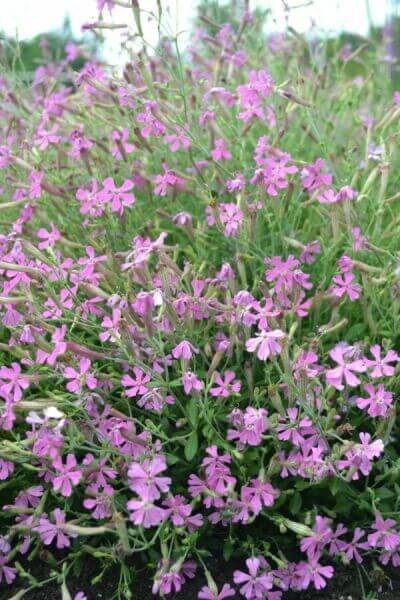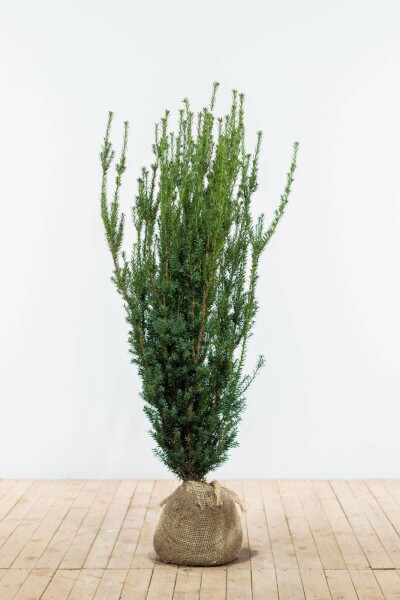Hedge Plants For Winter Berries
Hedge Plants For Winter Berries
Blog Article
Best Hedge Plants For Privacy
Enhance your garden's allure with lavish hedge varieties such as Yew (Taxus), Thuja, Laurel, Photinia, and Bamboo, commemorated for their structural integrity and ecological advantages.
Yew and Thuja offer evergreen protection and winter durability, while Laurel uses rapid growth and broad, aromatic leaves.
Photinia adds seasonal appeal with its lively red foliage, and Bamboo lends a low-maintenance, peaceful atmosphere.
These hedges improve air quality, lower noise, and produce tranquil, personal areas.
Proper planting, spacing, and maintenance make sure vigorous growth and ecological consistency.
Explore how these rich ranges can raise your garden's charm and wellness.
Secret Takeaways
Transform Your Garden With Lush Hedge Varieties
- Select Yew for its dense, evergreen development and unequaled longevity.
- Choose Laurel for its quick development and broad leaves, making sure quick privacy.
- Choose Photinia for its dynamic seasonal foliage, which turns a striking dark red.
- Use Bamboo for a low-maintenance, winter-hardy hedge with visual appeal.
- Area plants 2-3 per meter and prune regularly for ideal development and health.
Popular Hedge Plants
When changing a garden with rich hedge ranges, it's vital to think about popular hedge plants such as Yew, Thuja, Laurel, and Photinia due to their special attributes and advantages.
Yew (Taxus) is highly respected for its longevity and dense, green growth, making it a prime option for enduring landscapes.
Thuja is kept in mind for its evergreen foliage and robust winter season strength.
Photinia includes seasonal vibrancy with red leaves that darken gradually, producing vibrant visual appeal.
Laurel provides rapid growth and fragrant, broad leaves, perfect for fast personal privacy.
Furthermore, Bamboo is an outstanding choice for ambiance, using a low-maintenance, winter-hardy alternative that improves the garden's aesthetic with its elegant, swaying canes.
These choices accommodate a variety of horticultural requirements and choices.
Benefits of Garden Hedges
Garden hedges offer a plethora of advantages, making them a valuable addition to any landscape. These natural barriers are cost-effective to carry out and offer significant wind defense, improving air circulation and adding to sound reduction. The thick foliage of hedges like Thuja and Beech guarantees personal privacy by obstructing visibility, developing a peaceful and remote environment.
Hedges likewise play a crucial function in microclimate regulation, supplying a stable environment that cultivates plant growth and decreases temperature variations. Their elaborate leaf structures filter toxins, improving air quality and adding to a healthier garden environment.
Moreover, hedges master sound reduction, soaking up and deflecting sound waves to lower ambient noise levels. This double functionality of offering both visual and acoustic privacy boosts the overall serenity and visual appeal of any garden.
Planting and Maintenance Tips
For an effective hedge, careful preparation of the planting area is important. Make sure the soil has proper pH and drainage to support strong root development.
Area the plants appropriately for the selected species. Water the hedge often throughout its initial growth phase, changing as needed with seasonal changes.
Carry out a systematic insect control and illness avoidance method, utilizing natural or chemical treatments when essential. Regularly examine for aphids, termites, and fungal infections.
Apply mulch to maintain moisture and suppress weeds. Seasonal pruning promotes dense growth and air blood circulation, important for plant health.
Following these guidelines will help you cultivate a vibrant, well-maintained hedge that improves the beauty of your garden.
Spacing and Trimming Guidelines
Spacing and Cutting Guidelines
Correct spacing and trimming are important for cultivating healthy, visually appealing hedges. Appropriate spacing ensures each plant gets adequate nutrients, light, and air flow.
Follow these guidelines for optimal hedge upkeep:
- Spacing: Position hedge plants 2-3 plants per meter to motivate robust development.
- Pruning Strategies: Routine pruning is vital for preserving preferred hedge height and shape. Cut new growth in summer and cut down older wood throughout winter season.
- Seasonal Care: Change cutting approaches and schedules according to seasonal requirements to guarantee plant health.
- Hedge Height: Routinely monitor and trim to keep the preferred hedge height and accomplish uniform aesthetic appeals.
Adhering to these actions will guarantee your hedge prospers, enhancing both the appeal and functionality of your garden.
Picking the Right Hedge
Selecting the Right Hedge
Selecting the proper hedge involves assessing factors such as mature height, foliage density, and ecological strength. Effective hedge plant selection needs comprehending each species' development characteristics and site-specific adaptability.
For instance, Yew (Taxus) offers exceptional longevity and thick growth, while Thuja is significant Browse this site for its winter strength. Furthermore, considering maintenance requirements is crucial; fast-growing types like Laurel or Privet need regular cutting, whereas low-maintenance choices like Bamboo or Ivy may be more suitable for those looking for minimal maintenance.
Environmental elements such as soil type, light availability, and moisture conditions need to also assist the selection process. This mindful approach ensures the selected hedges will grow, offering both visual and functional benefits to the garden landscape.
Delivery and Planting Suggestions
To ensure your hedge plants flourish, they need to be delivered by specialized couriers and planted immediately upon arrival.
Follow these essential actions for successful planting:
- Soil Preparation: Enhance the soil with natural matter to enhance drain and nutrient material.
- Planting Depth: Produce a trench two times the width and equivalent to the depth of the root ball.
- Watering Techniques: Water thoroughly after planting, keeping the soil regularly wet however not filled.
- Mulching: Apply a layer of mulch to retain moisture and suppress weeds.
Client Assistance and Service
Offered the vital function of timely support in horticultural pursuits, our consumer support team is offered six days a week through telephone, e-mail, and social networks to use skilled suggestions and quickly address any concerns. Their commitment to fast reaction times makes sure consumer satisfaction by resolving queries related to plant health, optimal planting methods, and upkeep schedules.

Interaction Approach
-----------------
This extensive assistance system, strengthened by an excellent 9.3/ 10 customer rating, highlights our commitment to improving the gardening experience for each customer.
Often Asked Concerns
The Length Of Time Does It Consider Hedge Plants to Develop?
Hedge plants usually require one to 3 years to end up being totally developed, with the exact duration varying by species and growing conditions.
Effective care during this vital duration is vital for robust development. Consistent watering, watchful weed control, and suitable fertilizer application are pivotal in promoting strong root development.
For example, fast-growing types like Laurel might develop faster, while slower-growing varieties such as Yew might take longer. Thorough upkeep speeds up the establishment process, leading to thick and healthy hedges.
What Are the Best Hedge Plants for Privacy?
The concern of the very best hedge plants for privacy involves examining evergreen and deciduous choices.
Evergreen hedges like Thuja, Laurel, and Cypress offer year-round protection, ensuring constant privacy.
On the other hand, deciduous hedges such as Beech use seasonal personal privacy, shedding leaves in cooler months.
Secret upkeep suggestions for privacy hedges consist of regular cutting, fertilizing in spring, and appropriate spacing-- generally 2 to 3 plants per meter.
Additionally, constant watering and diligent weed elimination are essential for promoting healthy, dense development.
Can Hedge Plants Attract Wildlife to My Garden?
Yes, hedge plants can bring in wildlife to your garden by offering necessary benefits like shelter, food, and nesting websites, consequently enhancing regional biodiversity. For example, yew, holly, and laurel are exceptional for attracting birds, while ivy supports a range of insects.
However, it is very important to note that there are some downsides, such as increased maintenance to manage bugs and regular maintenance. Thoroughly choosing and keeping hedge varieties can help stabilize these downsides and benefits, eventually cultivating a vibrant and sustainable environment in your garden.
Are There Any Flowering Hedge Plants Available?
Yes, there are flowering hedge plants readily available that can enhance the charm of your garden.
For instance, Elaeagnus, also called Olive Willow, produces aromatic white flowers in the fall, including a touch of elegance.
Photinia, another popular choice, showcases dynamic red leaves that grow into an abundant green, creating a dynamic visual impact throughout the seasons.
To make sure these plants grow, it's important to practice appropriate pruning methods and seasonal upkeep, such as cutting brand-new development in the summer and cutting back in the winter.
These measures will help preserve the health and aesthetic appeal of your flowering hedges.
How Do I Prevent Insects in My Hedge Plants?
To avoid insects in hedge plants, utilize natural insect control techniques and preserve correct hedge care. Present helpful pests like ladybugs, which victimize damaging bugs, to develop a well balanced community.
Routinely examine your hedges for signs of invasion and without delay get rid of any afflicted parts to prevent the spread. Guarantee the health of your hedges by applying balanced fertilizers and supplying appropriate water.
Make use of mulching to keep soil moisture and proper spacing to reduce plant tension and promote robust development. These practices jointly help in minimizing pest issues and keeping a healthy hedge.
Conclusion
In essence, selecting the best hedge varieties such as Yew, Thuja, and Laurel can change any garden into a relaxing haven. These plants provide year-round plant, improve aesthetic appeal, and offer useful advantages like noise decrease and wind security.
Proper planting techniques, precise spacing, consistent watering, and seasonal cutting are crucial for optimal development.
Reliable shipment services and professional customer assistance ensure a smooth experience from purchase to planting, making it simpler than ever to elevate your outside space.
Garden hedges provide a wide range of advantages, making them a valuable addition to any landscape. These natural barriers are cost-effective to execute and provide considerable wind protection, improving air circulation and contributing to sound decrease. The dense foliage of hedges like Thuja and Beech makes sure privacy by blocking visibility, producing a remote and serene environment.

Pruning Techniques: Regular pruning is important for maintaining wanted hedge height and shape. Cut new growth in summer season and cut back older wood during winter.
Report this page